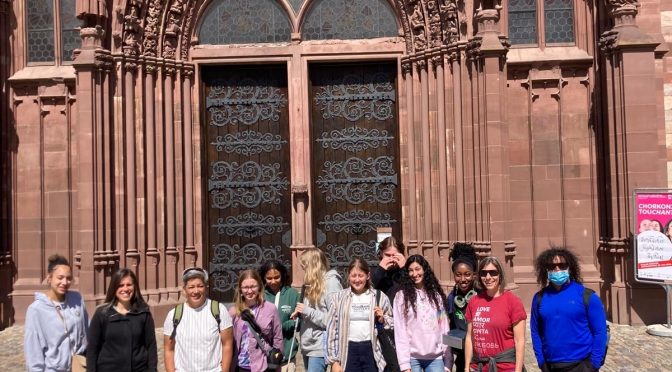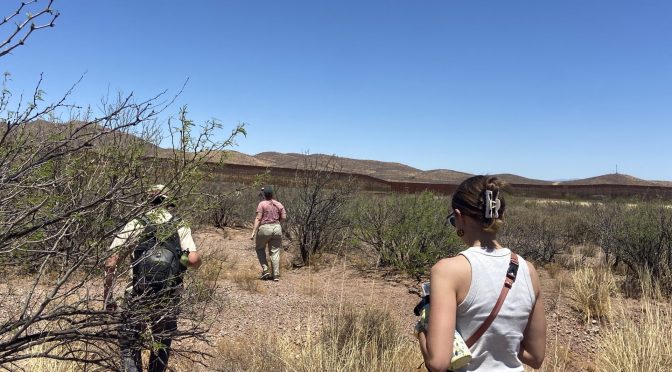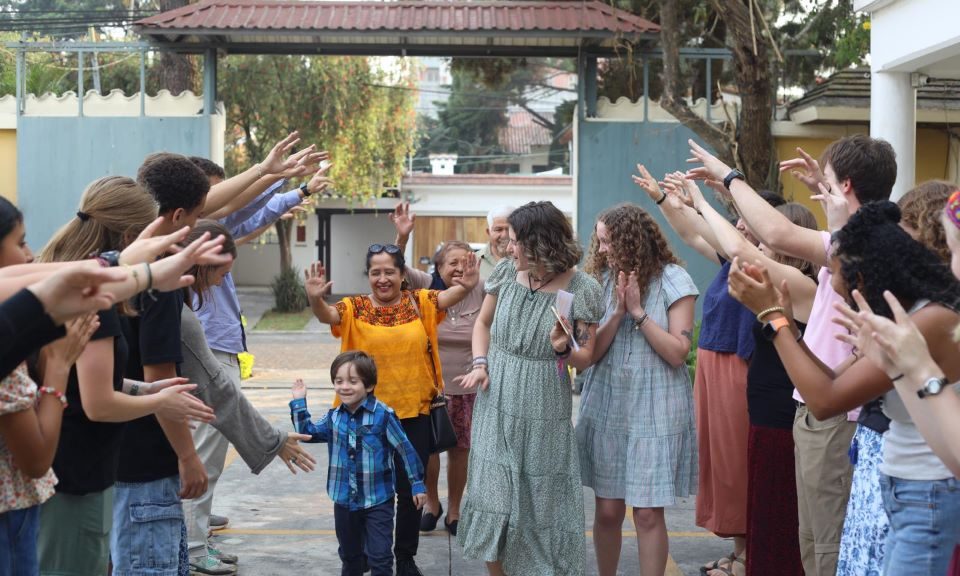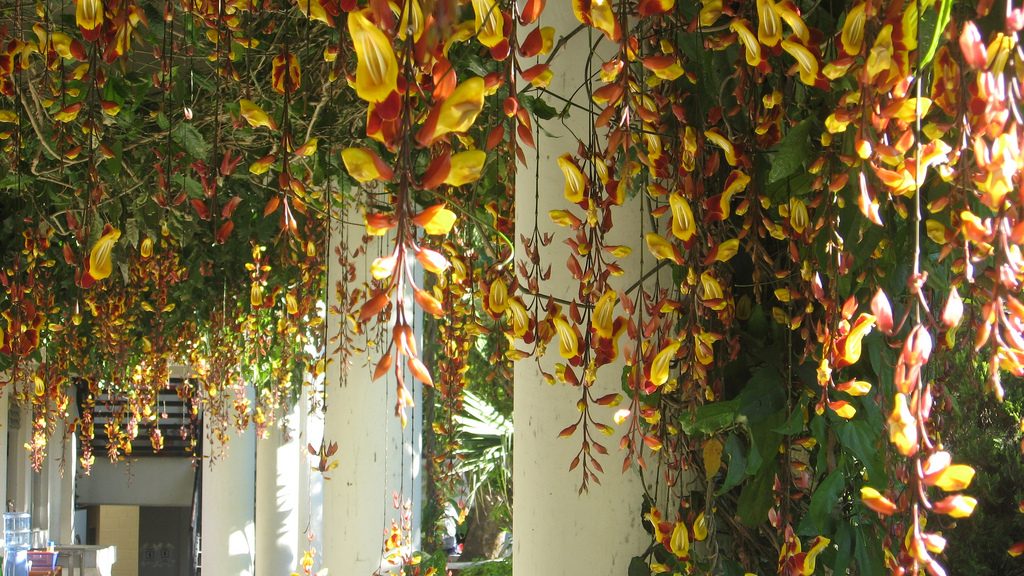
Guatemala: gradually, then suddenly
16 March, 2025
This week we heard from a few speakers, one speaking about Mennonites in Central America, another about Catholicism and Liberation Theology, and we heard from a group from Mennonite Central Committee (MCC) about their work and opportunities.
It was our last week of Spanish classes and our last week with our host families. Thursday … Continue Reading ››
Guatemala: Eternal Spring
The week started with our group on the Pacific black sand beach of Monterrico, where we had 2 nights to enjoy the ocean. We also visited an organization that protects sea turtles. We traveled back to the city on Tuesday and our afternoon visits were focused on migration. We visited Casa del Migrante … Continue Reading ››
Guatemala: faith connections / the volcano
23 February 2025
This week was centered around economics in Guatemala. On Monday and Tuesday we had guest speakers that talked about the economy in Guatemala and how it differs from other economies in the world. Wednesday, we visited the brewery Zapote of the Guatemalan brand of beer, Gallo. On Thursday we had our weekly EMU … Continue Reading ››
Guatemala: Opportunities
23. February
After a full week away from the city it was time to settle back into Spanish class and host family stays. This week was focused on the Health and Education systems in Guatemala. First, we compared private to public health care. Then we went  to … Continue Reading ››
to … Continue Reading ››
 to … Continue Reading ››
to … Continue Reading ››
Guatemala: Community Cloud Forest Conservation
18. February
For much of this past week, we were at the Community Cloud Forest Conservation (CCFC) in the Coban area of Alta Verapaz, Guatemala. Tuesday was a travel day with a long bus ride, arriving at CCFC later in the day. We spent Wednesday, Thursday, and Friday learning about the important work and programs … Continue Reading ››
Guatemala: Tikal
10. Febrero
This week the theme was justice, violence, and peace in Guatemala. On Monday we visited the Survivors Foundation, which is a nonprofit that helps women and children who have experienced domestic violence to rebuild their lives. On Tuesday, we had a Zoom call with Robert Brenneman, an EMU and CASAS alumni. He … Continue Reading ››
All Senses Engaged
3. Feb. 2025
After returning from the trip, this week was a chance to settle back into a regular routine. The theme of the afternoon class was human rights and we started with a trip to the OHDAG offices (Office of Human Rights of the Archbishop of Guatemala). The next day we watched … Continue Reading ››
Guatemala: Mayan history and modern culture
27 January 2025
Week 2 in Guatemala was quite eventful. On Monday we visited Casa de la Memoria and learned about the history of Mayans in Guatemala. On Tuesday we visited the Palacio National de la Cultura. On Wednesday, we heard Ronaldo Similox talk about Mayan spirituality. On Thursday we departed from … Continue Reading ››
Guatemala: Introductions
Week 1 Reflections - January 19
Our group flew from Reagan National Airport to Houston International, then on to Guatemala City. We heard about the History and Culture of Guatemala from Isra Ortiz Escobar. We also had some time to explore the community around Semilla/CASAS. The group went to Casa Horeb to experience a Mennonite … Continue Reading ››
U.S.-Mexico Border: Hard Realities
Welcoming in Mexico
When we arrived in Mexico, we were warmly welcomed by Mark and Joca, the leaders of Frontera de Cristo. In our welcoming, we were taken to the American side of the border where we were able to see the wall in person. Many discussions about the wall circulate in … Continue Reading ››
















